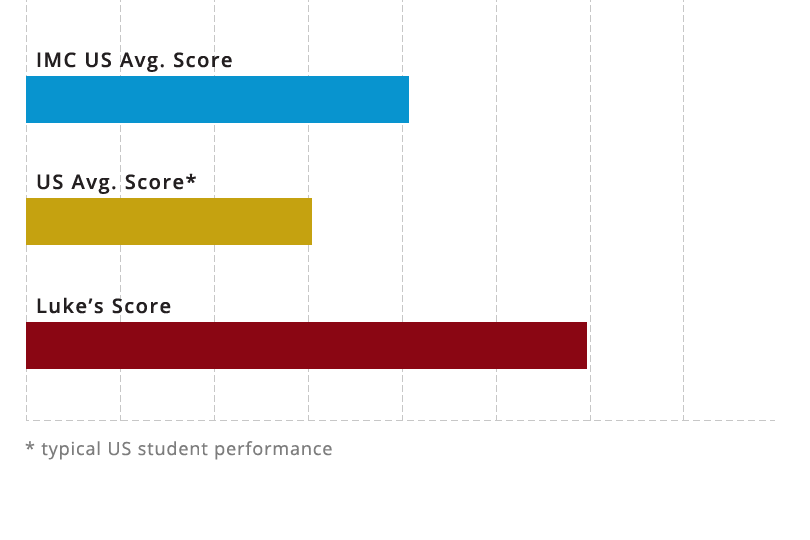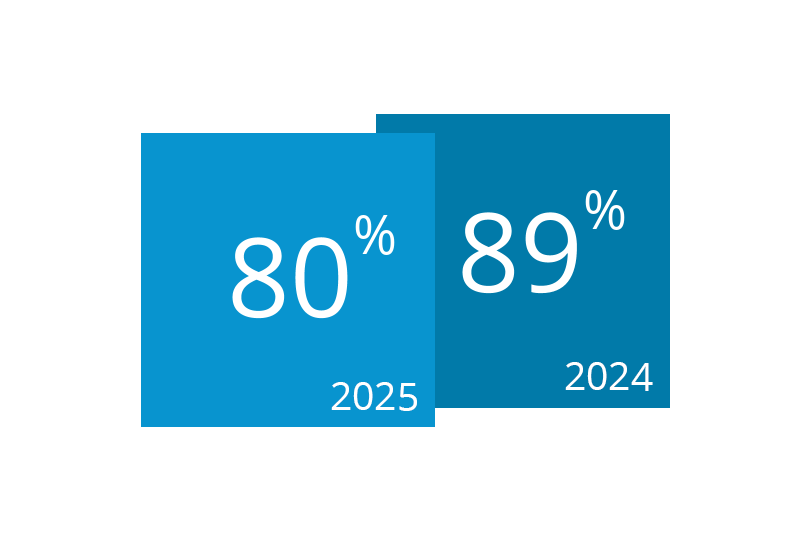PLACEMENT
Dear Parent,
Last month, Luke Ryan participated in the Online Challenge of the International Math Contest. Below
you will find a report detailing Luke Ryan’s performance on the contest. We hope that this will give
you deeper insight into Luke Ryan’s grasp of various mathematical concepts as compared to that
of Luke Ryan’s international peers.
Please note that this analysis is based on a sampling of problems across several concepts, and Luke Ryan’s performance on each. Student performance can be impacted by a variety of factors including distractions while taking the test, level of tiredness, etc.
If your child has qualified for the International Math Contest Round 2, you will be notified in a separate email by end of March.
Congratulations on your child’s participation in the Online Challenge, and we hope to see you next year!
-RSM Foundation
The Results are In
When compared to an international bar, your child is:
COMPETITIVE INTERNATIONALLY

RANKING
The contest problems covers concepts and skills typically mastered by Luke’s peers in countries renowned for high levels of achievement in mathematics education.
Luke’s performance indicates that his level of knowledge is on par with that of his peers in these countries.

STRENGTH AREAS
Proportional Reasoning: Ratios, Rates, and Percentages
Recognize proportional relationships; use ratios, rates, and percentages to solve problems.

Geometry
Apply definitions, formulas and theorems of Euclidean geometry to solve problems.

Problem Solving
Analyze problem situations, extract relevant details, and apply various strategies to find the solution to a problem.

GROWTH AREAS
Fractions and Decimals
Understand the meaning of a fraction and a decimal; perform operations with fractions and decimals.

Arithmetic: Operations and Properties
Use order of arithmetic operations and properties of these operations to compute efficiently; use algorithms for arithmetic operations.

ANSWERS
Luke Ryan correctly solved 9 problems of International Math Challenge for the 6th grade. He spent 30 minutes to complete the contest. View the full list of contest questions below.
| Correct Answer | 42 |
| Provided Answer | |
| See Solution | |
| % of Participants Solved this | 94% |
| Time Spent (min.) | 0.5 |
| Correct Answer | 20 |
| Provided Answer | |
| See Solution | |
| % of Participants Solved this | 67% |
| Time Spent (min.) | 0.5 |
| Correct Answer | 61 |
| Provided Answer | |
| See Solution | |
| % of Participants Solved this | 83% |
| Time Spent (min.) | 0.5 |
| Correct Answer | 64 |
| Provided Answer | |
| See Solution | |
| % of Participants Solved this | 84% |
| Time Spent (min.) | 1 |
| Correct Answer | 29 |
| Provided Answer | |
| See Solution | |
| % of Participants Solved this | 70% |
| Time Spent (min.) | 1 |
| Correct Answer | 16 |
| Provided Answer | |
| See Solution | |
| % of Participants Solved this | 44% |
| Time Spent (min.) | 1 |
| Correct Answer | 144 |
| Provided Answer | |
| See Solution | |
| % of Participants Solved this | 51% |
| Time Spent (min.) | 1 |
| Correct Answer | 52 |
| Provided Answer | |
| See Solution | |
| % of Participants Solved this | 39% |
| Time Spent (min.) | 3 |
| Correct Answer | 210 |
| Provided Answer | |
| See Solution | |
| % of Participants Solved this | 37% |
| Time Spent (min.) | 6 |
| Correct Answer | 13 |
| Provided Answer | |
| See Solution | |
| % of Participants Solved this | 42% |
| Time Spent (min.) | 3 |
| Correct Answer | 18 |
| Provided Answer | |
| See Solution | |
| % of Participants Solved this | 15% |
| Time Spent (min.) | 2 |
| Correct Answer | 52 |
| Provided Answer | |
| See Solution | |
| % of Participants Solved this | 22% |
| Time Spent (min.) | 9 |
| Correct Answer | 329 |
| Provided Answer | |
| See Solution | |
| % of Participants Solved this | 14% |
| Time Spent (min.) | 1 |
| Correct Answer | 116 |
| Provided Answer | |
| See Solution | |
| % of Participants Solved this | 12% |
| Time Spent (min.) | 2 |
MISTAKE ANALYSIS
A summary of the types of mistakes made by the participant and recommendations for improvement.
| Problem Number | Correct Answer | Provided Answer | Observations |
|---|---|---|---|
| 8 | 52 | Luke's answer demonstrates that he was able to cross-multiply to solve a proportion. Most likely, he multiplied by "12" instead of "1.2" at first, which indicates that Luke either omitted the decimal point while working through the calculations or did not correctly place the decimal point after the multiplication. We recommend working with Luke on paying attention to detail when he reads, plays, and listens, and we recommend more practice with decimals. | |
| 10 | 13 | Luke's answer demonstrates that he understood and correctly performed almost every step of this difficult problem. However, Luke most likely misinterpreted the "3/4 of an ounce from the second bowl" to mean "3/4 of the second bowl." We recommend working with Luke on paying attention to detail when he reads, plays, and listens. |
| Correct Answer | 52 |
| Provided Answer | |
Observations: Luke's answer demonstrates that he was able to cross-multiply to solve a proportion. Most likely, he multiplied by "12" instead of "1.2" at first, which indicates that Luke either omitted the decimal point while working through the calculations or did not correctly place the decimal point after the multiplication. We recommend working with Luke on paying attention to detail when he reads, plays, and listens, and we recommend more practice with decimals. |
|
| Correct Answer | 13 |
| Provided Answer | |
Observations: Luke's answer demonstrates that he understood and correctly performed almost every step of this difficult problem. However, Luke most likely misinterpreted the "3/4 of an ounce from the second bowl" to mean "3/4 of the second bowl." We recommend working with Luke on paying attention to detail when he reads, plays, and listens. |
|
QUESTIONS & SOLUTIONS
Below is a full list of the 2025 International Math Contest questions and the solution to each question.



